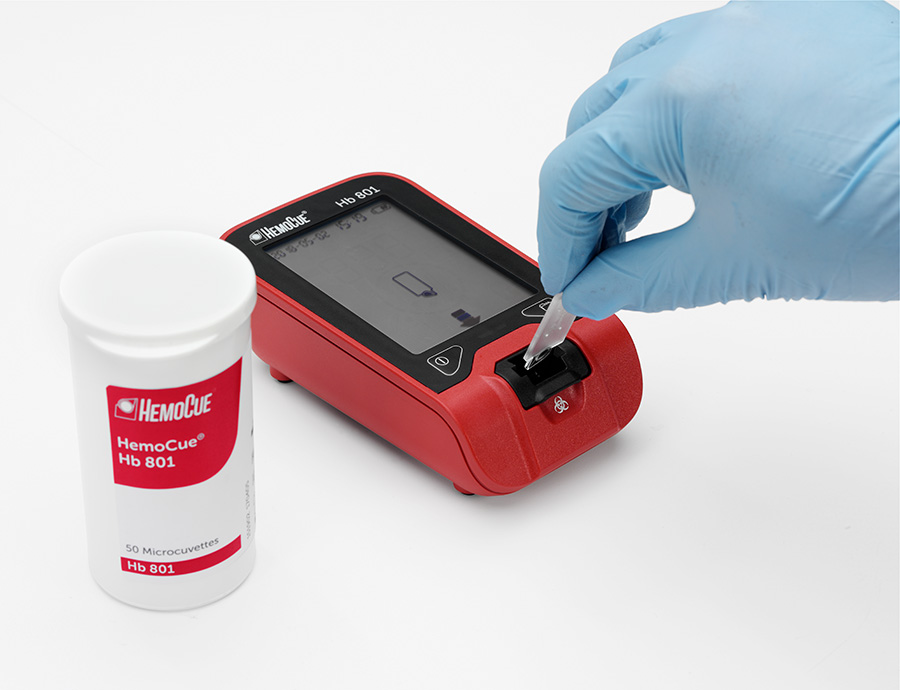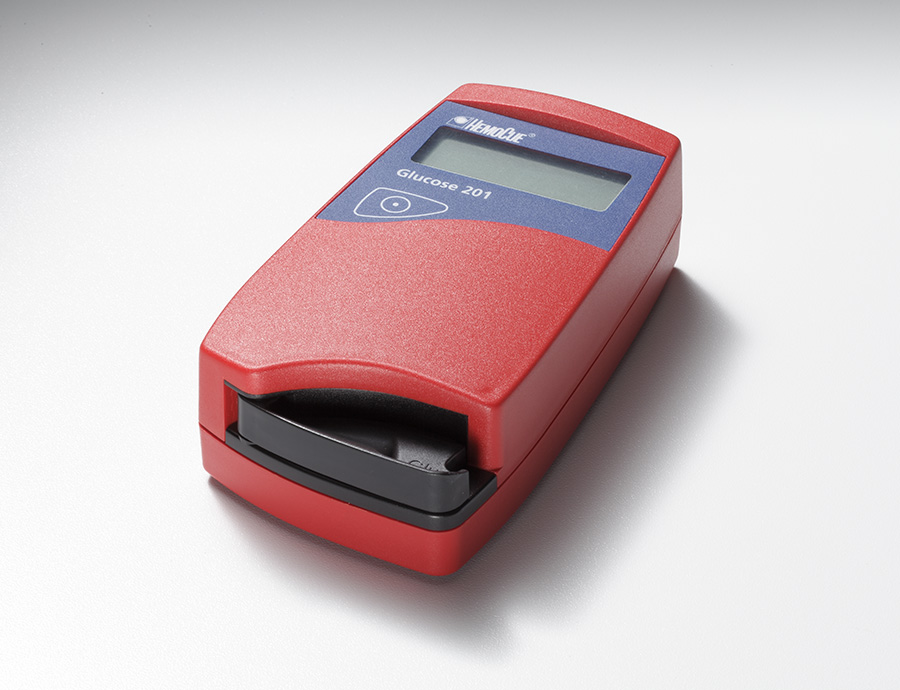Getting to the Point: The Future of Point-of-Care Testing is Now
There is no doubt that healthcare is primed for change. Whether your practice is marching toward the future with optimism or being dragged forward by unseen forces, you will need to understand the multiple forces that are at work in order to thrive in today’s dynamic environment.


Getting to the Point: The Future of Point-of-Care Testing is Now.
April 27, 2021
.
There is no doubt that healthcare is primed for change. Whether your practice is marching toward the future with optimism or being dragged forward by unseen forces, you will need to understand the multiple forces that are at work in order to thrive in today’s dynamic environment.
Among the most significant influences reshaping the delivery of health:1
- Patients have unprecedented access to an abundance of information via the Internet—not all of which is current or substantiated. In addition to health-related articles and websites, social media groups exist on multiple platforms covering a variety of health issues. Videos broadcast a vast assortment of professionals and personalities offering health insight and advice.
- Increasingly patients are seeking to get the upper hand on their health while displaying a newfound trust in technology. Online platforms enable patients to access certain medical records. Direct-to-consumer delivery of healthcare devices, tests, and services is on the rise. Gen Z and millennials have embraced wearable technologies that spit out continuous streams of health-related data.
- For patients of all ages, telehealth visits with healthcare providers are the new norm. And, Covid-19 has driven many patients toward non-traditional sources of healthcare, particularly in underserved areas. The availability of tests and vaccines at grocery stores and drugstores has established these as legitimate and often convenient sites of care.

.
In tandem with these influences, patients continue to place a premium on strong patient-physician relationships that emphasize patient choice. While patients were becoming less dependent on their physicians for access to medical information and resources prior to 20202, there is little doubt that this mindset has gained traction.
But, what does this mean to the physician practice?
On one hand, physicians may increasingly encounter patients offering their own self-assessments devised from Internet research or data collection. On the other hand, there will be others confounded by non-descript symptoms and simply worried about the possibilities. In between is a vast middle ground.
While the spectrum of knowledge and involvement among health consumers has broadened, there remains a common thread between most patients: “the need to know”:
• Are my assumptions about my problem correct?
• Is the information I have valid?
• Is there something seriously wrong with me?
• Am I just imagining these symptoms?
This “need to know” is what drives patients to their providers. Today’s patients are conditioned to seek answers on a more immediate basis. Physicians share the desire to achieve timely results, knowing this can alleviate stress and help generate trust. Unfortunately, the traditional process of delivering healthcare often requires time spent waiting for diagnostic results, which can sometimes work against this shared goal.
Let’s look at a common scenario: A patient presents to the physician for an initial consultation. If symptoms are vague and non-specific, healthcare providers may order tests, sometimes requiring an additional visit to a lab. The patient might receive lab results soon after, but they still need to book a follow-up visit to have the results explained by their physician. At that visit, a diagnosis may be discussed along with a plan of action. We’re now at a total of three visits for just one patient.



.
While the traditional model may be reasonable, it may not fit a patient’s expectations. Furthermore, a drawn-out process–which could range from days to weeks–might hinder communication and trust. And, in underserved areas, making multiple trips for healthcare visits can be burdensome, leading patients to give up entirely on the process.
In considering new approaches to healthcare, one strategy that can be beneficial is the implementation of Point of Care Testing (POCT) systems, like those from HemoCue. You can perform tests and review results in the same patient visit. No waiting for lab send-outs. POCT is ideal when rapid screening, diagnosis, and monitoring can enhance the management of disease.
POCT is particularly useful in situations where earlier treatment or the avoidance of misdiagnosis can mitigate risk. In fact, a survey of family medicine clinicians in several clinics associated with the Washington, Wyoming, Alaska, Montana, and Idaho Region Practice and Research Network identified 30 different conditions for which they believed POCTs would be most useful. Among the top POCT tests viewed as beneficial to clinical practice were diabetes (#1) and anemia (#2).3
Diabetes is an epidemic in the United States and is continuing to grow.4 Patients with suspected diabetes may present with non-specific symptoms, and the initial assessment often requires multiple visits. Similarly, the symptoms of anemia—another highly prevalent condition–can be associated with a host of other health problems.5 In both cases, rapid detection and treatment can improve a patient’s quality of life.
Convenience isn’t the only way in which patients and practices benefit from POCT. When tests are performed onsite, there is less concern about patients following through with trips to the lab. Additionally, the availability of a rapid result facilitates a more comprehensive consultation covering the continuum from symptoms to treatment. If additional testing is required, patients will have a better understanding of why further workup is needed.






.
The HemoCue® Glucose 201 System and HemoCue® HB 801 System deliver lab-quality results for diabetes and hemoglobin, respectively. These professional-grade POCT systems are designed for the needs of modern medicine so you can increase patient satisfaction and positive outcomes.
Accuracy is paramount for any test in a physician’s practice. Hemocue’s systems are designed and validated to ensure that results are comparable to those from a clinical laboratory. Systems are calibrated to produce consistent and accurate results with excellent lot-to-lot reproducibility. In addition, HemoCue provides extensive support and training through the OnCue Support Program.
There is good reason to believe that the time has come for POCT. COVID-19 normalized rapid testing across the U.S. and in a recent survey of 500 female patients, 75% said they would be more satisfied if healthcare providers could perform a test and discuss results with them during the visit.6
As the momentum swings toward greater patient autonomy and immediate information, POCT can contribute to practice effectiveness and help satisfy your patient’s need to know.
Footnotes:
1 “Are consumers already living the future of health? Key trends in agency, virtual health, remote monitoring, and data-sharing.” Deloitte, 13 Aug. 2020, https://www2.deloitte.com/us/en/insights/industry/health-care/consumer-health-trends.html.
2 Kilbride, Madison K, and Steven Jaffe. “The New Age of Patient Autonomy: Implications for the Patient-Physician Relationship.” JAMA, vol. 320, no. 19, 20 Nov. 2018, pp. 1973-1974. Doi:10.1001/jama2018.14382.
3 Hardy, Victoria, et al. “Which Point-of-Care Tests Would be Most Beneficial to Add to Clinical Practice? Findings from a Survey of 3 Family Medicine Clinics in the United States.”, vol. 16, no. 4, Dec 2017, pp. 168-172.
4 Centers for Disease Control and Prevention. National Diabetes Statistics Report, 2020. Atlanta, GA: Centers for Disease Control and Prevention, U.S. Dept of Health and Human Services; 2020.
5 Braunstein, Evan M. “Iron Deficiency Anemia.” Merck Manuals, March 2020, https://www.merckmanuals.com/professional/hematology-and-oncology/anemias-caused-by-deficient-erythropoiesis/iron-deficiency-anemia.
6 Based on a survey of 500 women in the U.S.
Related Articles
Introducing the HemoCue Customer Portal
